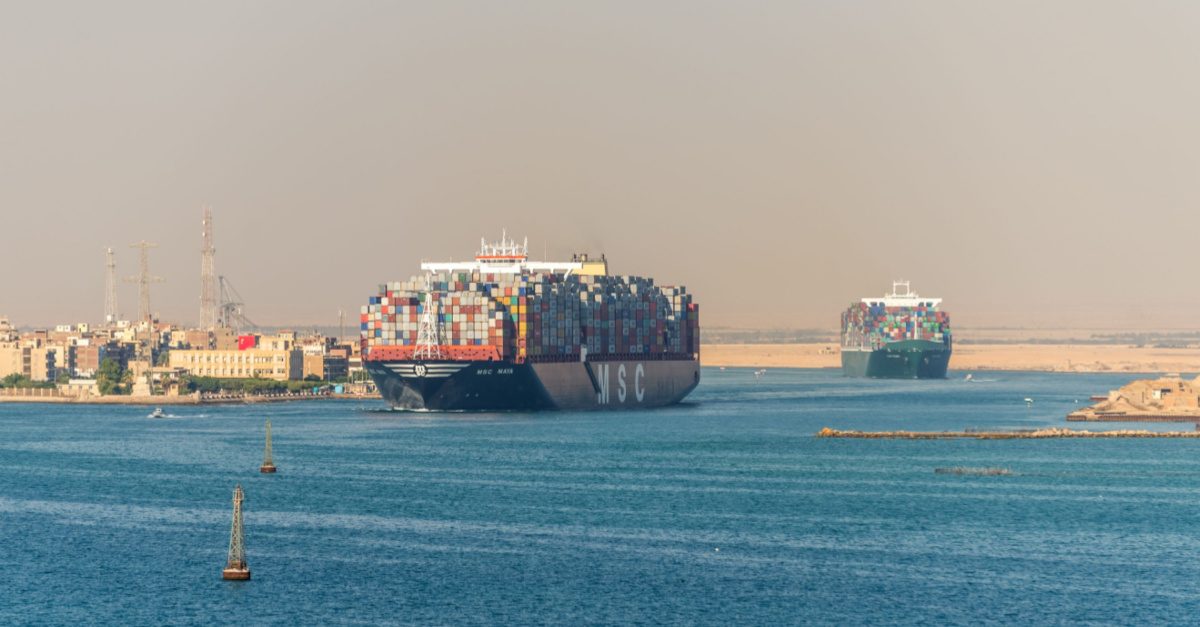
When the cargo ship Ever Given got stuck in the Suez Canal in March 2021, the entire global supply chain was affected. For nearly a week, cargo ships were stalled on both sides of the canal, halting U.K.-manufactured shipments headed overseas, as well as vital imports. It took months for the global supply chain — and the global economy as a whole — to overcome the backlogs and bounce back.
The fact that a single ship could cause such widespread havoc aptly illustrates the volatile nature of the modern supply chain. To avoid similar roadblocks in the future, industry leaders should look towards infrastructure for long-term supply chain sustainability. Infrastructure development is a vital component of supply chain sustainability, and it’s time for industry leaders to take note.
While they share similarities, today’s supply chain looks much different from that of the past. The physical movement of goods in the 21st century involves everything from transportation logistics to manufacturing plants and distribution centers, energy production, and IT systems that keep everything up and running.
To boost infrastructure development and reduce operational costs while improving efficiency, company leaders should thus look towards technology for solutions. Here’s what you need to know about the vital role of infrastructure when it comes to supply chain sustainability — and how technology fits into the overall picture.
Infrastructure in the U.K.: The Good, the Bad, and the Outdated
The U.K. has relied on global trade for centuries and remains a major player in terms of international commerce. The total value of U.K. imports and exports makes up about half of the country’s total gross domestic product. Further, according to key economic indicators from the House of Commons Library, the U.K.’s exports of goods and services totalled £625 billion and imports totalled £654 billion in 2021.
The U.K.’s primary international trade partners include China, the United States, and Germany, and all those goods have to be transported. None of that trade could exist without the infrastructure to support it — encompassing freight, flight, and trucking logistics. And, unfortunately, the U.K. is lacking in many respects when it comes to infrastructure development.
Emerging construction technologies, ranging from building information modelling to predictive analytics, are helping to close this gap and provide much-needed support to the supply chain. Further, while the word “infrastructure” in supply chain discussions typically brings roadways, buildings, and bridges to mind, it would be a mistake to overlook the importance of the electrical grid. In recent years, the British government has invested heavily in energy projects and associated infrastructure. Despite major projects, such as the £25 billion nuclear power station currently under construction at Hinkley Point in Somerset, infrastructure plans often rely heavily on private sector funding — and predicting market fluctuations can be tricky.
Technological Advancements in Supply Chain Management
It’s easy to see the full scope of an issue in hindsight, but how can you stay ahead of the supply and demand game? Here’s where technology comes into play. Innovations such as artificial intelligence (AI) and machine learning can interpret data much faster and more accurately than a human data analyst can. In addition to eliminating human error, one of AI’s most useful applications is its predictive capability, an essential component of both market research and infrastructure development.
While AI gives you a clear picture of the supply chain as a whole, it’s just one of the various forms of emerging technologies currently in use. In the construction industry, for example, supply chain management is made easier with the help of technology like 3D printing, virtual reality, and predictive analytics. For its part, AI is used to streamline communication among project collaborators, and it serves predictive functions as well. With AI in logistics, supply chain managers can identify areas where money can be saved, allowing for greater accuracy on future projects.
Predictive technology is also useful when it comes to phasing out the aforementioned ageing infrastructure that’s causing a wide variety of supply chain problems across the U.K..
Defying and Improving Supply Chain Sustainability
Aging infrastructure is a costly issue on a variety of levels. Along with the power grid, the U.K.’s water and wastewater infrastructure is largely unstable, especially in the major metropolis of London. There, more than 60% of water pipes are older than 60 years with some even dating back to the 1800s. The Thames Water Utilities, Ltd. company repairs thousands of leaks a year, yet millions of liters of drinking water are wasted every day and the economic cost lands in the billions.
It’s not all bad news when it comes to U.K. infrastructure, however. Our digital infrastructure ranks among the world’s strongest — which is great news in terms of technological support. It’s also massive. The U.K.’s digital infrastructure can support a tech sector larger than that of the rest of Europe combined.
Britain has always been resilient, and today’s supply chain managers are at the forefront of a modern tradition of continued supply chain resilience. To that end, investing in various types of infrastructure can help streamline operations across the supply chain, and technology such as AI is essential to its continued sustainability.
